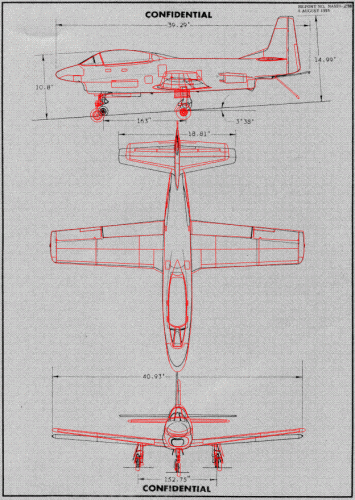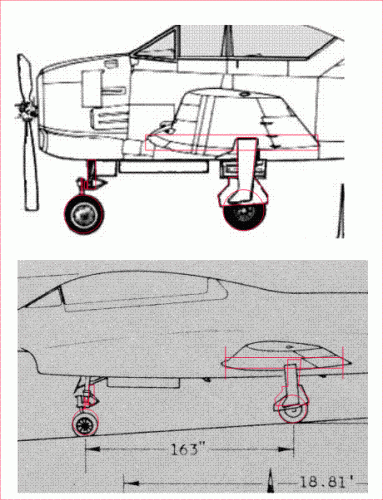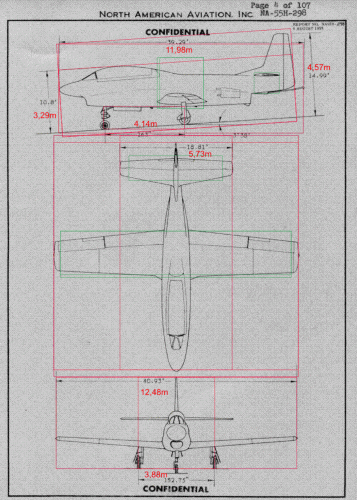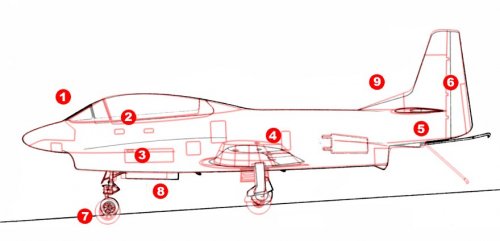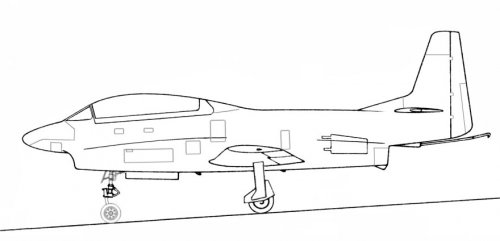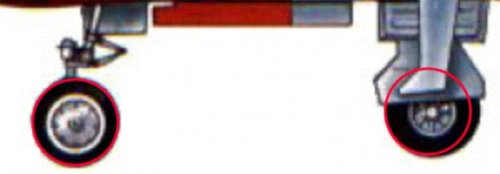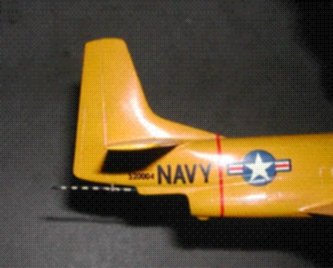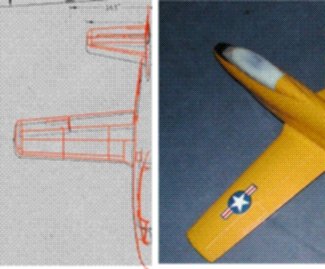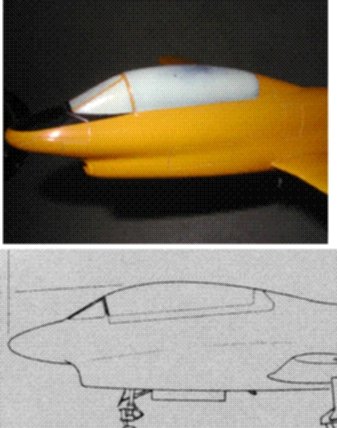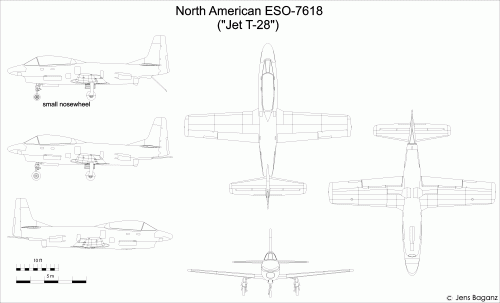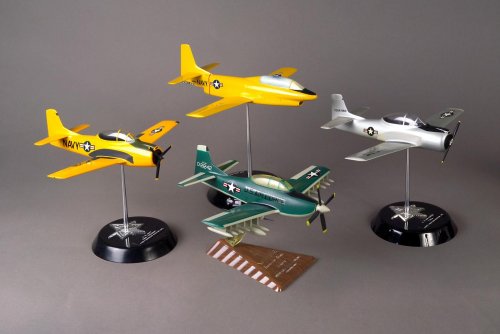- Joined
- 11 March 2006
- Messages
- 8,625
- Reaction score
- 3,794
Ok, ok, got several points wrong, most worrying to me is the overall length. For some
of those points, I would simply blame the model maker, e.g. the too long wind screen.
But what's strange to my opinion , is that although the 7618 actually would have been
smaller, than calculated by me, the landing gear in the manufacturers drawing actually
seems to be much smaller, than anticipated by me, although it should be just the other
way round, IF the T-28 landing gear would have been used. I checked this again using
a T-28 3-view, with wing chord as reference. I actually used 3 different drawings, in the
cut-out only one is shown, because results were the same. May it be, that it's a similar
case,as we had with the Douglas D-890/895/900 and others, where the reason for such
drawings seems have been to give exact dimensions, but not necessarily precise details ?
Nevertheless, thanks for sharing it .. could just have saved me some hours, if I had seen
it before, but exercising's always worthwhile !
of those points, I would simply blame the model maker, e.g. the too long wind screen.
But what's strange to my opinion , is that although the 7618 actually would have been
smaller, than calculated by me, the landing gear in the manufacturers drawing actually
seems to be much smaller, than anticipated by me, although it should be just the other
way round, IF the T-28 landing gear would have been used. I checked this again using
a T-28 3-view, with wing chord as reference. I actually used 3 different drawings, in the
cut-out only one is shown, because results were the same. May it be, that it's a similar
case,as we had with the Douglas D-890/895/900 and others, where the reason for such
drawings seems have been to give exact dimensions, but not necessarily precise details ?
Nevertheless, thanks for sharing it .. could just have saved me some hours, if I had seen
it before, but exercising's always worthwhile !

